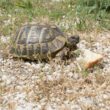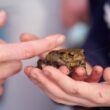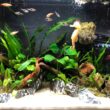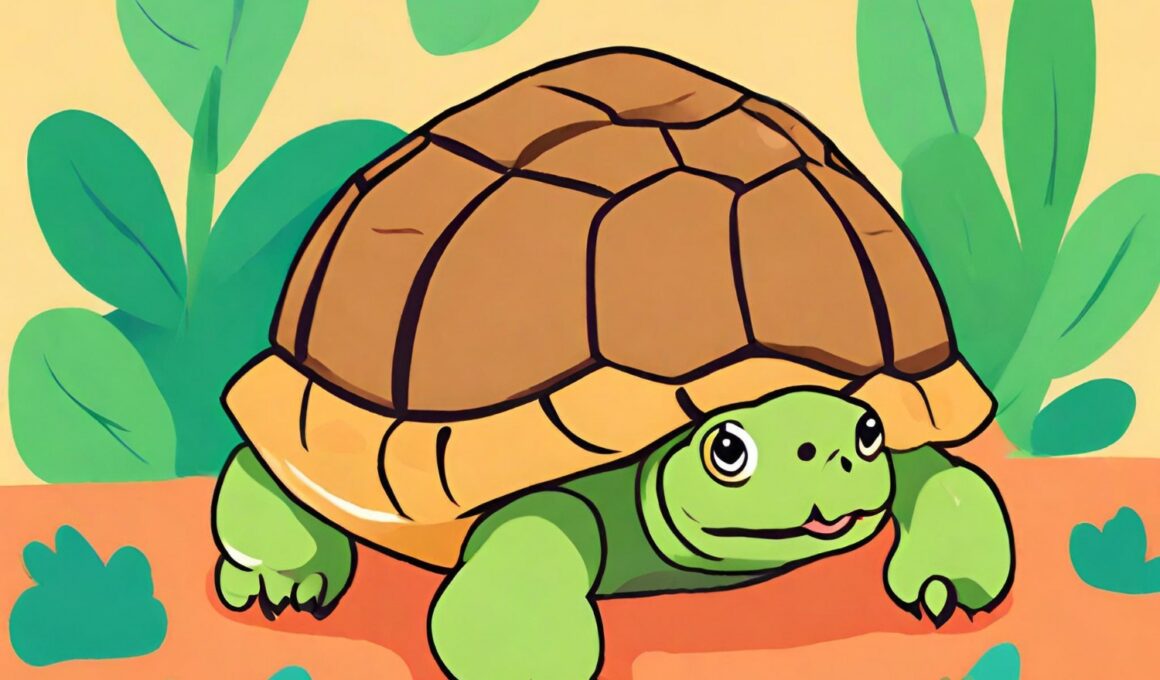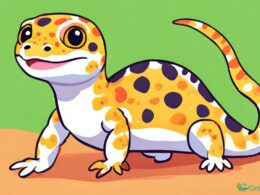In this article Show
The world of pets is vast, but few creatures captivate our hearts quite like the Russian tortoise. With their unique appearance and fascinating history, it’s no wonder these little reptiles have grown in popularity among pet owners.
You know, between my usual pet care routines, I often find myself lost in books and articles about reptiles, always eager to learn more. And the Russian tortoise? It has always been a standout topic.
Now, if you’re here to understand the essentials of caring for these remarkable creatures, you’re in the right place. In this guide, we’ll walk through everything you need to know to ensure your Russian tortoise lives a happy, healthy life.
Choosing the Right Russian Tortoise
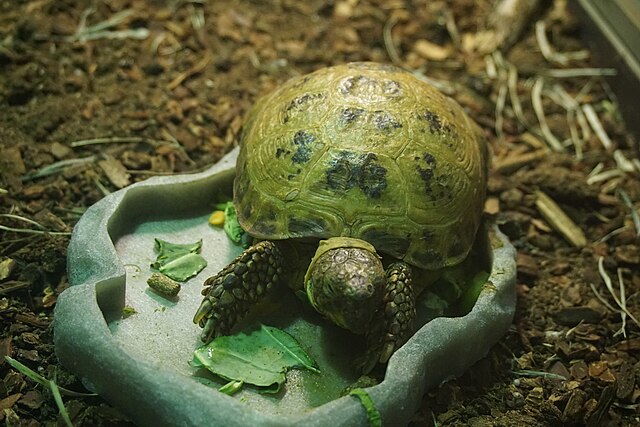
Before you embark on the journey of Russian tortoise ownership, it’s imperative to make informed decisions. Selecting the right tortoise can make a significant difference in both your experience as a pet owner and the well-being of your new reptilian friend.
Male vs. Female: Differences and Considerations
While both male and female Russian tortoises make for wonderful pets, there are distinct differences between the two. Males tend to be smaller in size with a more concave underside (plastron) to facilitate mounting during mating.
Their tails are generally longer and thicker compared to females. Females, on the other hand, have a flatter plastron and are generally larger.
Considering the size differences, females might require a slightly larger habitat space. Additionally, if you’re thinking of getting more than one tortoise, keep in mind that housing two males together can lead to territorial disputes.
Health Indicators to Look For When Selecting a Tortoise
Your tortoise’s health should be a top priority from the get-go. According to a study published in the Journal of Veterinary Science, there are several key health indicators to consider when choosing a Russian tortoise:
- Eyes: Should be clear, bright, and free of discharge.
- Shell: Firm and free of cracks, soft spots, or discoloration.
- Activity level: Active behavior and responsiveness to stimuli.
- Weight: A consistent weight without sudden gains or losses.
- Nose and mouth: No discharge or unusual colorations.
Always consult with a vet or a tortoise specialist if you’re uncertain about the health of a prospective pet.
Age considerations
The age of your Russian tortoise can influence its care needs. Younger tortoises might be more vulnerable to certain illnesses and require a bit more attentive care. Mature tortoises, while more resilient, might have established behaviors and dietary preferences.
Generally, those seeking a long-term pet commitment might opt for younger tortoises, while those looking for a shorter-term commitment due to factors like age might consider adopting an older tortoise. Remember, with proper care, Russian tortoises can live up to 50 years or more!
Choosing the right Russian tortoise is about understanding your commitment and ensuring you can provide a loving, healthy environment for your new pet. Whether male or female, young or old, with the right care, your tortoise can thrive.
Creating an Ideal Environment
The environment you provide for your Russian tortoise plays a pivotal role in its overall well-being. Both indoor and outdoor setups have their merits, but it’s crucial to ensure that the conditions are optimal, mimicking their natural habitat as closely as possible.
Indoor Housing: Requirements and Setup
When opting for an indoor setup, space is paramount. Russian tortoises are active and love to roam, so providing ample space is essential. A minimum enclosure size for an adult tortoise should be around 8 square feet, but bigger is always better.
Ensure that the enclosure has walls that are high enough to prevent escape and are non-transparent to avoid stressing the tortoise. Solid walls make the tortoise feel more secure and prevent them from attempting to go through what they perceive as open space.
Types of Substrates
The substrate is essentially the bedding or floor of the enclosure. The best substrates for Russian tortoises are those that mimic their natural, dry habitat:
- Cypress mulch: Retains some moisture without getting too wet.
- Coconut coir: Allows for natural digging behaviors.
- Grass hay: Edible and replicates their natural environment.
- Mixed topsoil and play sand: Provides a more natural feel.
Avoid cedar or pine shavings as they can be toxic to tortoises.
Heating And Lighting Considerations
Russian tortoises thrive in warm environments, so maintaining the right temperature is crucial:
- Basking area: Around 90-95°F (32-35°C).
- Cooler area: Around 70-75°F (21-24°C).
Using a ceramic heat emitter or heat mat can help maintain these temperatures. Always have a thermometer to monitor the temperatures regularly.
UVB lighting is also essential for Russian tortoises. It aids in the synthesis of vitamin D3, which in turn helps in calcium absorption. Ensure that your tortoise gets 10-14 hours of UVB light during the day.
Outdoor Housing: Benefits and Precautions
If you’re blessed with the right climate, outdoor housing can be a fantastic choice. It offers natural sunlight, more space, and a varied environment for your tortoise to explore. However, there are precautions to bear in mind.
Predators and Safety Measures
In an outdoor setting, predators such as raccoons, birds of prey, and even dogs can pose a threat. Ensure that the enclosure is secure on all sides, including a mesh or wire top to prevent aerial predators.
Also, consider burying the enclosure’s walls at least 12 inches underground to deter burrowing predators and prevent the tortoise from digging its way out.
Weather Considerations
Russian tortoises prefer temperatures between 70-90°F (21-32°C). In colder climates, consider bringing your tortoise indoors during the winter months. On extremely hot days, provide shaded areas and perhaps a shallow water dish for cooling.
In rainier climates, ensure the enclosure has adequate drainage to prevent flooding and soggy conditions, which are not ideal for the Russian tortoise.
Creating the ideal environment for your Russian tortoise requires keen attention to detail, but with the right setup and considerations, you’ll have a happy and thriving pet for many years to come.
Dietary Needs
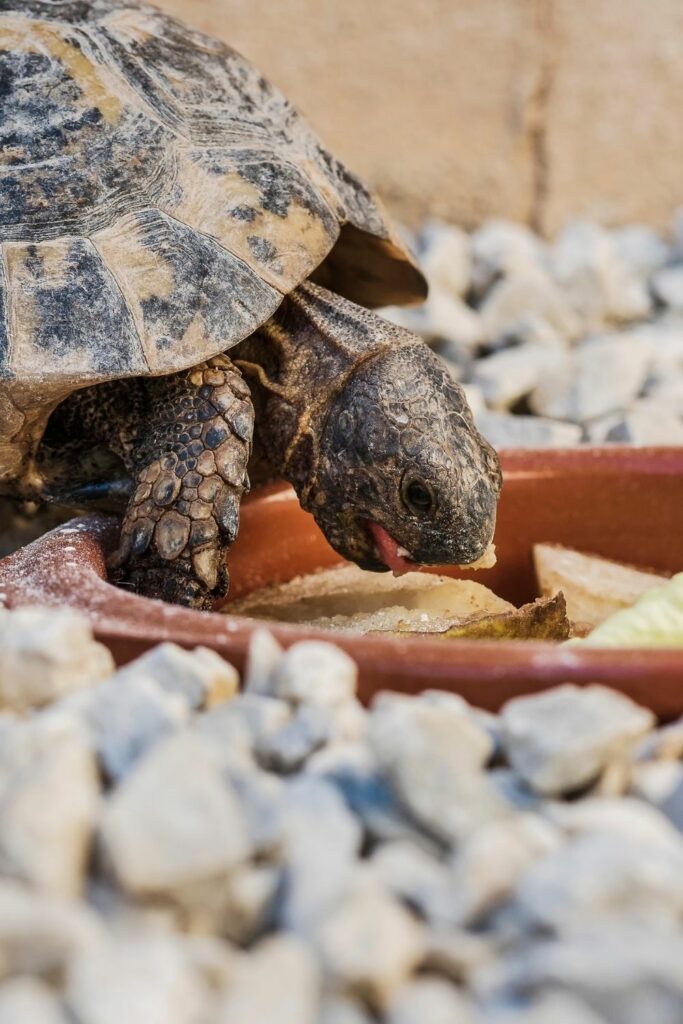
One of the most vital aspects of Russian tortoise care revolves around their diet. Like us, these creatures thrive best when given a balanced and nutritious intake. Understanding the dietary needs of the Russian tortoise not only ensures its health but also contributes to a more active and vibrant pet.
Essential Foods and Nutrients
Russian tortoises are primarily herbivorous, thriving on a diet of leafy greens and vegetables. Some of their favorites include:
- Leafy greens: Dandelion greens, endive, mustard greens, and collard greens are all excellent choices.
- Vegetables: Bell peppers, zucchini, and cucumber can be given occasionally.
- Flowers: Hibiscus and rose petals can be a treat, but ensure they’re free of pesticides.
It’s essential to provide a varied diet, mimicking the diverse plants they would consume in the wild.
Foods to Avoid
Not everything green is good for your tortoise. Some foods can be harmful or even toxic. According to a publication in the Reptile Care Magazine, foods high in oxalates, like spinach and rhubarb, should be avoided as they can bind to calcium and inhibit its absorption. Other foods to steer clear of include:
- Fruits: While not toxic, they can upset the tortoise’s digestive system if given in large quantities due to their sugar content.
- Protein-rich foods: Meat, dog food, and cat food are not suitable for Russian tortoises and can lead to kidney problems.
- Dairy: Tortoises are lactose intolerant and cannot digest dairy products.
Frequency and Portion Sizes
A daily serving of fresh greens is ideal for adult Russian tortoises. The portion size should be roughly equivalent to the size of the tortoise’s shell. Juveniles, being more active and in their growth phase, might require slightly more food.
Importance of Calcium and Vitamin D3
Calcium is vital for the healthy development of a tortoise’s shell and bones. To ensure adequate calcium intake, sprinkle a calcium supplement on their food 2-3 times a week.
Pairing this with regular exposure to UVB light or providing a vitamin D3 supplement ensures the calcium is properly absorbed, as vitamin D3 aids in calcium metabolism.
In essence, the dietary needs of the Russian tortoise are straightforward yet pivotal for its well-being. Offering a balanced and varied diet, coupled with essential supplements, will ensure your pet remains healthy and active.
Regular Care and Maintenance
To ensure that your Russian tortoise remains in the pink of health, regular care and maintenance of its environment are paramount. By establishing a routine, you create an environment that’s both clean and stimulating for your pet, ensuring they remain active and free from potential health risks.
Cleaning and Sanitation of Their Enclosure
Daily Cleaning
- Spot clean: Every day, remove any feces, uneaten food, and other waste. This not only keeps the enclosure tidy but also helps prevent the growth of harmful bacteria and molds.
- Water dish: Clean and refill the tortoise’s water dish daily to provide fresh water.
Weekly Cleaning
- Substrate: Depending on the type of substrate used, consider sifting through to remove impurities or replace a portion of it every week.
- Disinfect: Wipe down the walls of the enclosure, any rocks, hides, and other fixtures with a reptile-safe disinfectant.
Monthly Cleaning
Complete change: Every month, remove and replace the substrate entirely.
Deep clean: Disinfect the entire enclosure, including all the fixtures, ensuring all residues are rinsed off.
Monitoring and Ensuring Optimal Humidity Levels
- Hygrometer: Install a reliable hygrometer to monitor the humidity levels in the enclosure.
- Misting: For increasing humidity, consider a light misting of the enclosure. However, ensure it doesn’t get too damp, which can lead to respiratory issues.
- Water dish: The water dish also plays a role in maintaining humidity levels. Ensure it’s always filled and placed in a part of the enclosure where it can aid in raising humidity slightly.
- Ventilation: Ensure that the enclosure is well-ventilated to prevent excessive moisture and potential mold growth.
Nail and Beak Trimming
Nail Trimming
- Regularly inspect your tortoise’s nails. If they become too long or sharp, they may need trimming.
- Use a pair of reptile nail clippers, and be careful not to cut too close to the quick.
- If unsure, consult a veterinarian or an experienced reptile keeper.
Beak Trimming
- Russian tortoises have a beak instead of teeth. Over time, this beak can overgrow if not naturally worn down.
- Feeding your tortoise on a flat rock or rough surface can help naturally wear down the beak.
- If the beak becomes overgrown, it’s recommended to have it trimmed by a veterinarian or an experienced handler.
In essence, regular care and maintenance are not just about cleanliness; it’s about ensuring the optimal health and happiness of your Russian tortoise. With a consistent routine, you can create an environment where your tortoise thrives, living its best life.
Health Concerns

While Russian tortoises are generally robust and hardy creatures, they are not immune to health issues. Being proactive about their health and being informed about potential concerns can make all the difference in ensuring they lead a long, healthy life.
Common Illnesses and Their Symptoms
Respiratory Infections
Symptoms include wheezing, nasal discharge, lethargy, and loss of appetite. Often, a tortoise with a respiratory infection will have its head tilted upwards, seemingly struggling to breathe.
Shell Rot
This is a fungal or bacterial infection on the tortoise’s shell. Indicators are soft spots, discoloration, an unpleasant odor, and sometimes even fluid oozing from the affected areas.
Metabolic Bone Disease
Due to insufficient calcium or vitamin D3, symptoms are soft or deformed shells and bones. Tortoises may also display tremors or weakness in their limbs.
Internal Parasites
While some parasites are typical, an overload can cause issues. Symptoms include a change in appetite, weight loss, and abnormal feces.
Eye Infections
Swollen, closed, or crusty eyes can indicate an infection or a Vitamin A deficiency.
Preventive Measures
- Regular cleaning: Keeping the tortoise’s environment clean reduces the risk of bacterial and fungal infections.
- Balanced diet: Ensure a diet rich in necessary nutrients, especially calcium and vitamin D3, to prevent metabolic bone disease.
- Quarantine new pets: If introducing a new tortoise or another reptile, quarantine them for a few weeks to ensure they don’t introduce any illnesses to your existing pets.
- Regular health checks: Regularly inspect your tortoise’s eyes, nose, mouth, shell, and skin for any abnormalities. Check its weight and activity levels to monitor its overall well-being.
- Avoid dampness: Ensure the enclosure doesn’t get too damp or cold, which can lead to respiratory issues.
When to See a Veterinarian
- Change in behavior: If your tortoise becomes unusually lethargic, aggressive, or stops eating, it’s time for a vet visit.
- Visible symptoms: Any signs of infections, including discharge from the eyes or nose, soft spots on the shell, or unusual lumps.
- Abnormal feces: If you notice parasites or any drastic change in their droppings.
- Weight loss: A sudden or consistent loss of weight is a cause for concern.
- Injuries: Any visible injuries, especially if they involve the eyes or the underside of the shell.
Always remember that early detection and intervention can make a significant difference in the outcome. Establishing a relationship with a reputable reptile veterinarian and scheduling regular check-ups can ensure your Russian tortoise remains in peak health.
Breeding Russian Tortoises
Breeding Russian tortoises can be a rewarding experience for any reptile enthusiast. However, it requires careful planning, understanding of their reproductive behaviors, and the right environment to ensure the well-being of both the adults and the resulting hatchlings.
Understanding Their Reproductive Behavior
Mating Ritual: Male Russian tortoises are known to be quite aggressive during the mating ritual. They might ram into the female or circle her, making distinct vocalizations. The male will also often bite at the female’s legs or the edges of her shell.
- Seasonality: Typically, breeding activity increases in the spring and after a period of hibernation or brumation.
- Egg-laying: After successful mating, a female will seek out a suitable spot to dig a nest, usually at a depth of about 2-4 inches. She’ll lay between 1 to 5 eggs, which are elongated and slightly soft.
- Fertility: It’s worth noting that females can store sperm and lay several clutches of eggs from a single mating.
Creating a Conducive Breeding Environment
- Separate enclosures: Given the aggressive nature of males during the mating process, it’s recommended to house males and females separately and introduce them under supervision.
- Provide hiding spots: To reduce stress, ensure that there are multiple hiding spots in the enclosure when introducing the pair.
- Nesting areas: Females need soft, easily diggable substrate to create their nests. Providing a section with a mix of sand and soil can be beneficial.
- Climate: Ensure the environment mimics their natural springtime conditions. This includes adequate warmth and UVB lighting, stimulating their natural breeding instincts.
Caring For Hatchlings
Incubation
Once the female lays the eggs, they need to be carefully transferred to an incubator. The temperature should be consistently maintained between 84-88°F (29-31°C). The eggs will typically hatch in 8-10 weeks, depending on temperature and conditions.
Initial Care
Hatchlings are very delicate. They should be kept in a separate enclosure with a softer substrate to prevent injury. Ensure they have access to shallow water dishes and are not at risk of drowning.
Diet
Young tortoises grow rapidly and require a calcium-rich diet. Feed them with calcium-dusted leafy greens daily. Their diet should mirror that of adults but in smaller portions.
Protection
Hatchlings are vulnerable to many predators, including other household pets. Ensure they are safely housed in a secure environment away from potential threats.
Breeding Russian tortoises can certainly be a delightful venture, but it requires dedication, time, and resources. With careful planning and the right care, you can witness the miracle of life and contribute to the growth of these magnificent creatures.
Social Interaction and Handling

Interacting with your Russian tortoise can be a joyous experience, but understanding their temperament and the nuances of handling is crucial to ensure their well-being and yours.
According to a study published in the Journal of Arbor View Animal Hospital, regular gentle handling of reptiles can lead to reduced stress levels and better acclimatization to human interactions. However, there’s a fine line between regular interaction and over-handling, which can be detrimental to their health.
Do’s and Don’ts When Handling Your Russian Tortoise
| Do’s | Don’ts |
|---|---|
| Wash your hands: Before and after handling, always ensure you have clean hands to prevent the spread of germs. | Avoid sudden movements: Fast or jerky actions can startle your tortoise. |
| Gentle grasp: Hold the tortoise gently from both sides of its shell. Avoid squeezing or applying too much pressure. | Don’t hold them too frequently: Over-handling can lead to stress and potential health issues. |
| Keep low: When picking up your tortoise, always remain close to the ground or a soft surface to minimize the risk of injury if they wriggle free. | Avoid high or insecure places: Never place a tortoise on a high shelf or any place from which they might fall. |
| Limit handling time: While Russian tortoises can become accustomed to handling, it’s best to keep sessions short to reduce stress. | Steer clear of the face: Avoid touching the tortoise’s face or poking its eyes. |
Their Temperament And Signs of Stress
Russian tortoises are generally docile creatures, but they each have individual personalities. While some may be more tolerant of handling, others may prefer to be left alone.
Signs of Stress Include
- Hissing or puffing sounds when picked up.
- Constantly trying to escape or hide.
- Decreased appetite or refusal to eat.
- Rapid breathing or panting.
- Unusual aggression or biting.
Importance of Providing Enrichment
Enrichment activities stimulate a tortoise’s mind and cater to its natural behaviors, ensuring mental and physical well-being.
- Change of scenery: Occasionally changing their habitat setup or introducing new hiding spots can provide a fresh environment for exploration.
- Toys and obstacles: Items such as balls or tunnels can keep them entertained. However, ensure any added items are safe and free from harmful materials.
- Feeding enrichment: Offering food in challenging ways, like hanging leafy greens or using food puzzles, can mentally stimulate your tortoise.
- Safe outdoor time: If possible, allowing your tortoise supervised outdoor time can be a wonderful enrichment activity, letting them experience different terrains and natural sunlight.
Establishing a bond with your Russian tortoise while respecting its boundaries is the key to a healthy and fulfilling relationship. Regular interactions combined with proper handling techniques and enriching activities will ensure your tortoise leads a happy, stress-free life.

